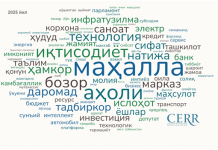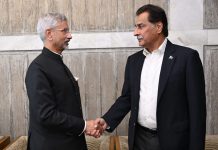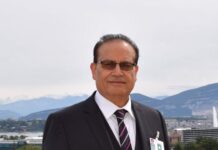Muhammad Irfan
The present world is rapidly growing in technology and the digital era. Technology has become an essential component in every aspect of life, from eating and drinking to sleeping and rising in the morning, from entertainment and enjoyment to medicine, education, jobs, agriculture, and advanced industries. Every single thing has become dependent on technology. In Pakistan, where over 100 million people now use the internet, this digital tide offers hope for a nation yearning to educate its youth, yet millions in rural areas remain cut off by patchy networks and power outages. Higher education, once confined to lecture halls and scarce resources, now stands at the cusp of a digital revolution. By embracing technology, Pakistan can transform its universities into gateways of opportunity, if it can overcome the barriers of underfunding and unequal access.
This technological wave beckons Pakistan to reimagine higher education, where students from the mountains of Chitral to the plains of Sindh can learn without limits. Still, the gross enrolment ratio in higher education is lower at 12 percent in the country compared to global standards, and public universities have been struggling with overcrowded seats and obsolete infrastructure. The Higher Education Commission (HEC) has initiated digital projects such as online education and learning, but this is hampered by insufficient budgets and a lack of trained faculty. Technology is the solution to this, and it promises to fill these gaps with online courses and digital tools that can make education accessible and relevant in a digital world. The potential is immense- Pakistan can equip its young population of 60 percent to compete in the global market, only by using infrastructure and digital literacy to make sure that none of the students are left behind.
Libraries, once the sole keepers of knowledge, have been eclipsed by the internet’s vast digital libraries, e-books, and online databases, opening a world of information to students and educators alike. In Pakistan, where rural libraries are nearly nonexistent and urban ones often outdated, this shift is a lifeline, letting a student in Quetta access global research with a click. But digital literacy lags—many students, especially in remote regions, struggle to navigate online resources, and slow internet hinders their efforts. Yuval Noah Harari’s words capture the stakes: “The most important skills of the 21st century are not reading and writing, but critical thinking, communication, collaboration, and creativity.” The internet’s endless data can spark these skills, turning a young mind in Peshawar into a critical thinker, but Pakistan must train its youth to wield this tool effectively.
The delivery of education has been reshaped by technology, breaking barriers of distance and circumstance. Online platforms, like those transforming Allama Iqbal Open University from postal courses to digital classrooms, bring learning to Pakistan’s 60 percent rural population, where universities are often out of reach. An online program can allow a shopkeeper in Gwadar or a mother in Swat to obtain degrees through flexible programs. However, unstable internet and regular power outages undermine this promise, and most schools do not have the servers or the know-how to implement strong e-learning. Blended learning, which is a combination of online and face-to-face learning, could be a potential solution to personalize education; however, the digital infrastructure in Pakistan requires immediate improvements. Investment in connectivity and education can transform a dream into reality by making education the right of every individual in the country.
Communication, the soul of learning, thrives in the digital age. Tools like WhatsApp, email, and online forums allow students in Lahore to collaborate with students in Islamabad, exchanging ideas with professors at once. The virtual solution, such as Zoom, can save time and is a way to bring faculty spread across universities located in various parts of Pakistan to meet each other and become creative. The digital divide continues, however, with poor reception in the rural regions of Balochistan and resources strained in the urban megacities such as Karachi. Administrators share updates via digital tools, but most of them are incompetent in taking full advantage of these tools. The potential is obvious: professionally providing the universities with quality technology and educating personnel to forge dynamic academic societies that are as good as anywhere in the world can make the scholars in Pakistan a unifying force in the pursuit of knowledge.
In higher education, data seems to swim everywhere: grades, enrolments, and the demand for resources. The analytics enabled by technology can use this data to generate insights that could then guide an institution such as Punjab University to streamline its courses or assist students in need. In Pakistan, where universities are overcrowded and youth unemployment rates are running at nearly 8 percent, analytics could place education where employment opportunities prevail and enhance the future of graduates. However, not many institutions possess the tools or knowledge to make decisions based on data, and there is a low number of technical training programs. The possibilities are radical—envision universities forecasting dropouts or programming to meet industry demands and boosting Pakistan’s economy. Such an investment in analytics transforms education in the country, not merely making it available but effective in defining a future where all graduates prosper.
Technology’s revolution in higher education is Pakistan’s chance to soar, turning universities into engines of progress for a nation of 240 million. Digital libraries can break geographical barriers; those who are unreachable can be accessed through online platforms, and smarter institutions can be built through analytics. However, the journey is uphill because poor funding of universities, a lack of stable internet connections, and minimal digital literacy can widen existing gaps. To turn this around, Pakistan must take strong steps forward: increase investment in the HEC, collaborate with tech companies to invest in infrastructure, and educate teachers to adopt digital technologies. The young generation, the heartbeat of Pakistan, needs to be prepared through their education to live in a digital world. Will we seize this moment to build a future where knowledge knows no bounds, or will we let old barriers hold us back? The time to choose is now.
Muhammad Irfan

















